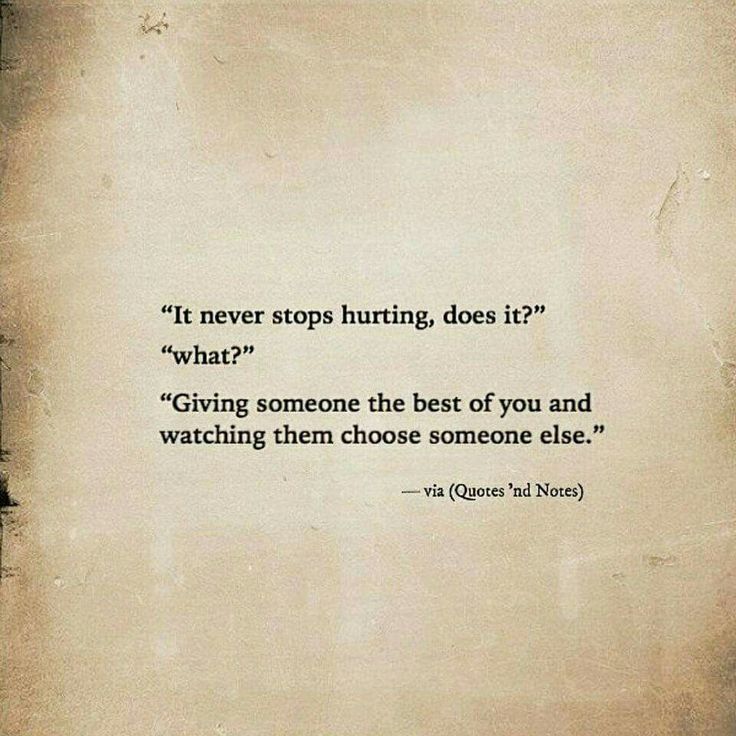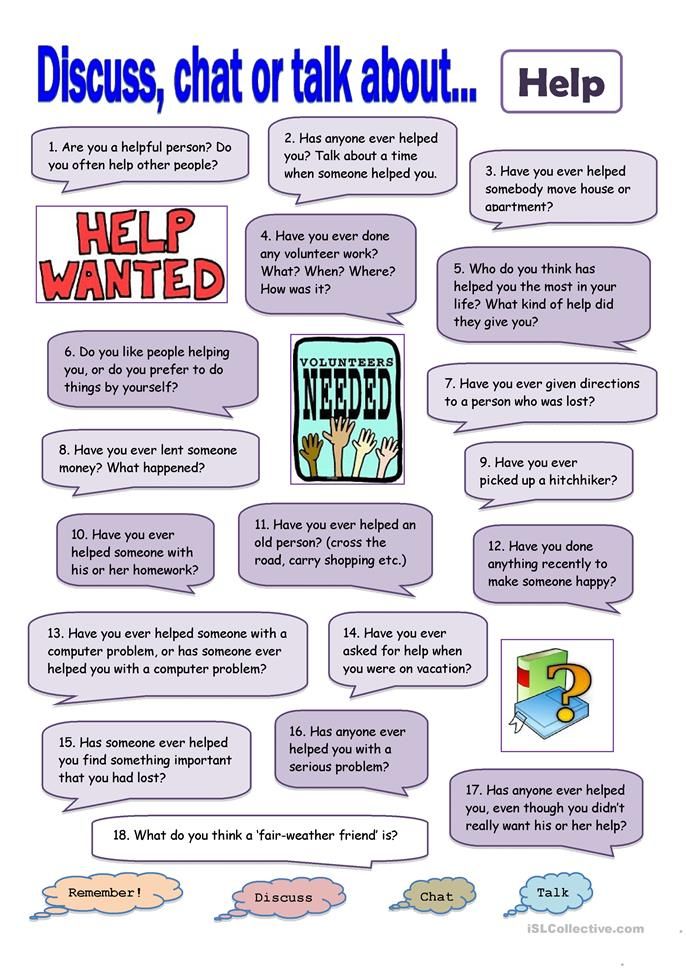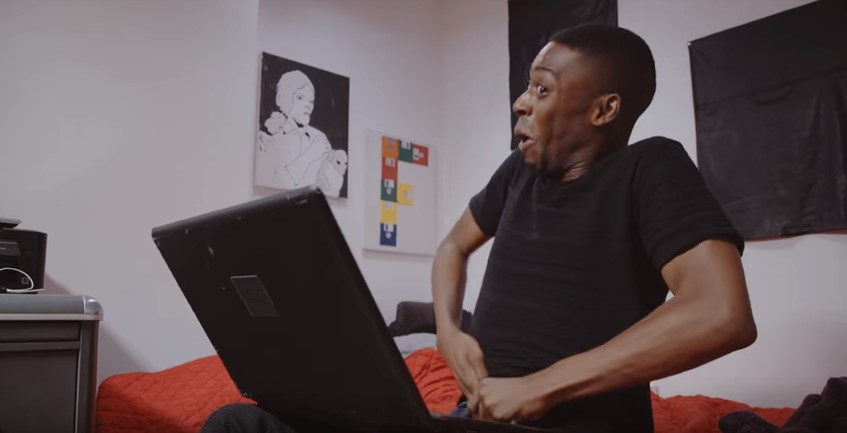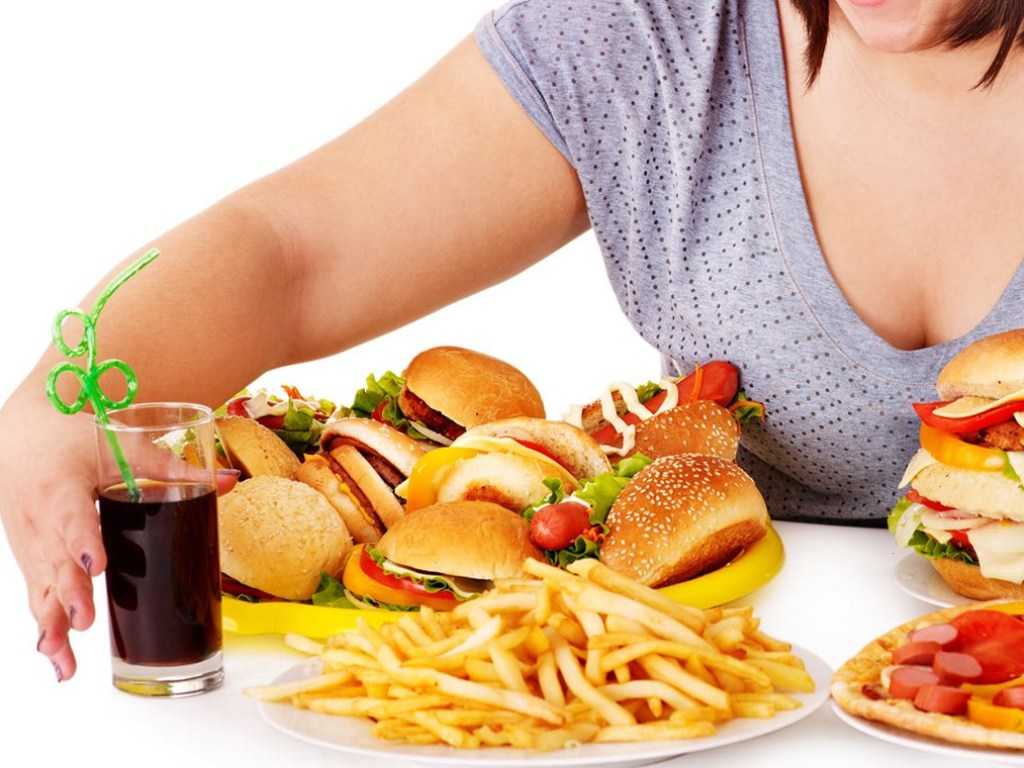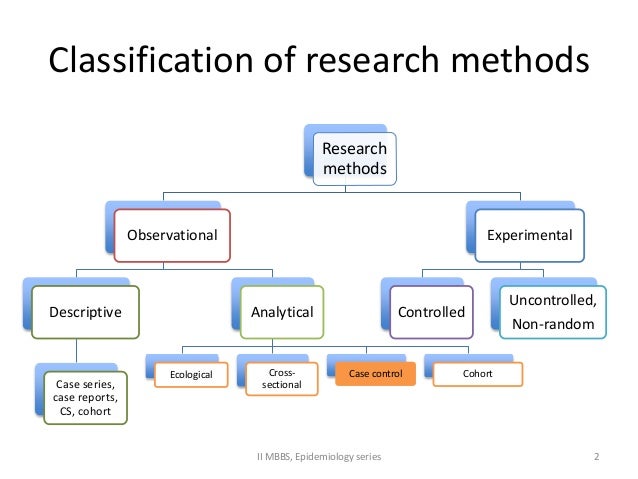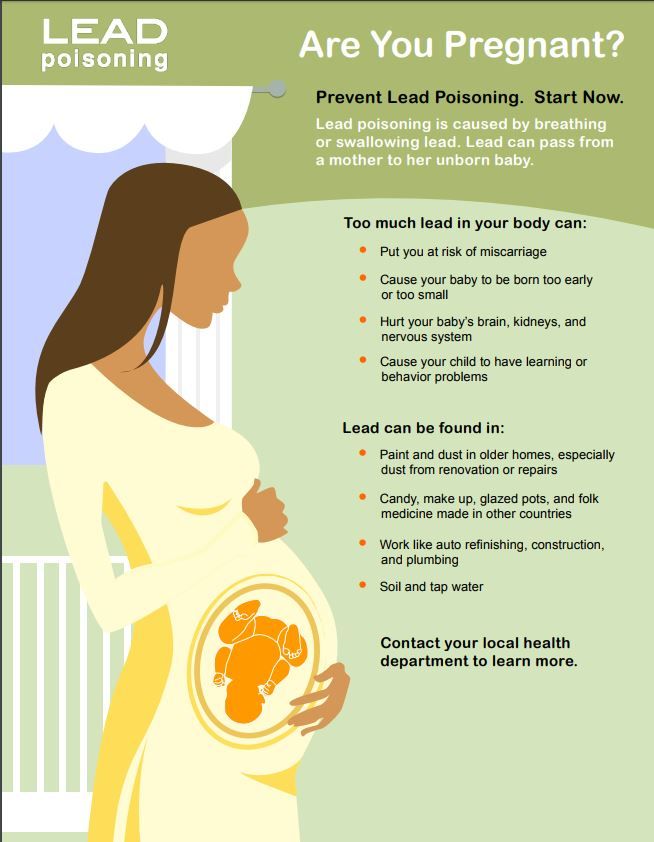Stop the hurt
How To Stop Hurting When You Feel Like There's No Way Out
One thing that I’ve always a hard time with is bouncing back after a breakup and trying to figure out how to stop hurting.
I’m much better now than I was years ago, but every now and then, something happens and I find myself stuck on feelings of pain while rehashing the past.
One year after a very painful breakup, I still felt completely stuck. How could he just forget about me and move on so quickly with another girl? Didn’t I mean anything to him? Wasn’t I enough?
I hadn’t been “enough” for him because I believed that I wasn’t “good enough” for anyone – myself included. It’s hard to make someone see in you things that you can’t even see in yourself.
I was devastated. So what did I do? I would go involve myself with another emotionally unavailable guy or a new friend that I felt like I had to “win over” and somehow compete for their love and attention. And as long as I involved myself with people like this, I never had to deal with the pain of my past.
Even though I was in pain, I wasn’t really doing anything to get to the root of it.
I didn’t know how to stop hurting. My pain was a weed that I kept spraying the repellent of denial on – instead of taking the time to get the right tools and uproot it, once and for all.
How do you get unstuck when you don’t know how to stop hurting?
What kept me stuck was a lack of self-love. I had zero belief that I could get or feel any better. My confidence was gone. And even though I felt like I was dealing with my pain just because I always felt it, I wasn’t. At all. Constantly feeling is not dealing.
You would never treat your physical health this way so why continue operating at the cost of your emotional body?
I was like a car running for a year with the break alert light on. My breaks finally gave out and I hit a wall. When I learned how to properly feel my way through the pain, I started to embrace those feelings. This allowed me to stop emotionally shutting down whenever something made me feel vulnerable or when I felt like I was at risk of being abandoned or rejected.
This is exactly why I’m such an advocate for not contacting your ex after a breakup. Even though you miss him and are heartbroken, you must grieve. Grieve the death of the person that you realize, does not exist. Know that they have not changed and understand that this is a symptom of you needing to turn inward. You have a real shot at having the kind of relationships, friendships, and life that you’ve always dreamed of. Don’t let it pass you by.
If you don’t know how to stop hurting, the only way to unclog that nasty toilet for good is to feel the pain and work through it by taking action and facing your fears, head-on. Heal, deal, and release. Flush the sh*t.
If you acknowledge that you are hurting and that pain is residing within you, what will happen to that pain? If you stop fighting it, acknowledge that it’s there, and commit to feeling it and working through it, what will be of the pain then?
Just like the house alarm that goes crazy when you walk in and it won’t stop blaring until you enter the passcode, you’ll begin to disarm the pain and the hold it has on you.
The reason you can’t stop hurting and feel trapped in your feelings is the same reason that you keep revisiting and attracting the same, hurtful dynamics and relationships. This is all you know. It’s familiar and to you – it’s home.
Sometimes home is NOT where the heart is. Sometimes home is a dirty, painful, and f*cked up place that needs a deep cleaning.
To move past this once and for all, you need to honor and acknowledge the bad, the ugly, the painful, the good… everything.
Yes, of course, remembering the pain was hard. But it allowed me to make the commitment to myself to work through my unresolved feelings, as opposed to working against them.
Your great, great, great, great grandparents kicked their asses to stay strong and stay alive so that YOU could be here and decide to take action now. Not so you could live a life of “destined” misery, get rejected by undeserving people, and be forever broken. The End.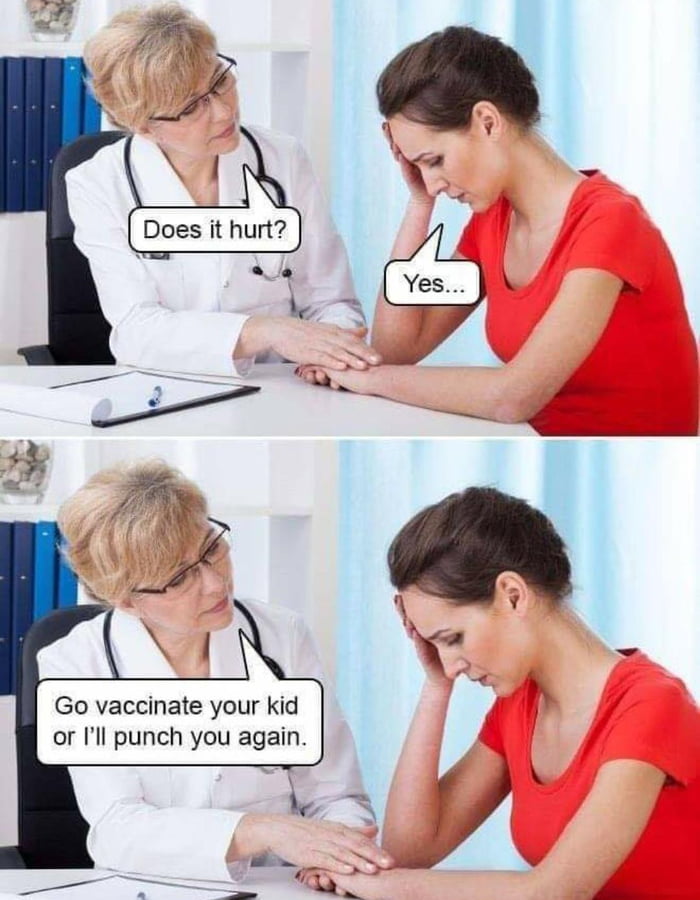
You are built to prevail and you can get out of the pain.
You are never alone; we’ve got each other.
x Natasha
+ If you need further and more personalized help with your breakup, please look into working with me here.
I am worried someone will hurt my children or me. What are my options?
Physical abuse by one person against another is a crime. It also can force a parent to make difficult decisions about child support. Although the Division of Child Support (DCS) would like to collect the money owed to every family, the safety of the family must come first. The list below offers some options to consider when making decisions about child support in light of family violence.
You can tell the police
Harming another person is against the law. You can call your local police department and file a report. If you have left home and have to go back to retrieve clothes or belongings, you may ask the police to accompany you.
You can apply to participate in the Address Confidentiality Program (ACP)
The ACP assists victims of family violence who are relocating to avoid further abuse. It helps participants keep their home, work and/or school address secret by providing a substitute mailing address. ACP will:
- Give you a substitute mailing address and help you use it.
- Forward your first class mail from the substitute address to your home.
- Assist you in getting many state and local agency services without revealing your address.
- Help you vote or marry without having those records available to the public.
Find out about the ACP by calling 360-753-2972 or 1-800-822-1065, or go to https://www.sos.wa.gov//acp/.
If you receive public assistance, you can get permission not to help collect child support
Generally, when you receive public assistance (either a cash grant or medical), the Division of Child Support opens a child support enforcement case and you are expected to help us establish and/or collect support. However, if you believe that establishing or enforcing child support will put you or the child in danger, you may claim "good cause" not to cooperate. The Community Services Office (CSO) will evaluate your claim and may decide that it is too dangerous even to open a child support case. You may claim Good Cause when you apply for assistance, or any time afterward. The public assistance office may decide that DCS should stop all establishment and enforcement action on your case, or they may decide that it is safe to continue. You have the right to a hearing on this decision. If good cause is granted, your case will be reviewed by the CSO on a regular basis to see if the danger continues.
However, if you believe that establishing or enforcing child support will put you or the child in danger, you may claim "good cause" not to cooperate. The Community Services Office (CSO) will evaluate your claim and may decide that it is too dangerous even to open a child support case. You may claim Good Cause when you apply for assistance, or any time afterward. The public assistance office may decide that DCS should stop all establishment and enforcement action on your case, or they may decide that it is safe to continue. You have the right to a hearing on this decision. If good cause is granted, your case will be reviewed by the CSO on a regular basis to see if the danger continues.
If you do not receive public assistance, you can stop enforcement of the child support order
Nonassistance custodians can ask DCS to stop working their case. At your request, we will take no action to collect support owed to you. However, if the noncustodial parent owes any back support to Washington State, DCS will continue to collect these arrears. The custodian may request a Conference Board if the collection of arrears by DCS endangers the family. To stop enforcement of your case, contact your Support Enforcement Officer.
The custodian may request a Conference Board if the collection of arrears by DCS endangers the family. To stop enforcement of your case, contact your Support Enforcement Officer.
Does stopping enforcement mean the debt goes away?
If a child support order exists, the child support debt continues to accrue, even when DCS does not collect. In both public assistance and non assistance cases, asking DCS to stop collecting does not end the other parent's responsibility to pay child support. If a child support order exists, the noncustodial parent still owes that amount each month. Unpaid support is a debt that you may be able to collect later.
You can ask a court to grant a civil order of protection.
A court can order an offender to stay away from you or the children. A person violating a court order is subject to punishment by the court. Some county courts have a Domestic Violence Unit to help you through this process. Some can help you with filing the necessary documents to obtain an order of protection. Others have advocates to help you in court. Learn more about domestic violence from the Washington Violence Against Women Network.
Others have advocates to help you in court. Learn more about domestic violence from the Washington Violence Against Women Network.
Read the Frequently Asked Questions page.
DSHS has a domestic violence resource web page - Domestic Violence Services
Drug-Free Pain Relief
Children's Cancer Centers offer a variety of drug-free pain relief options. These strategies help children and adolescents control their physical and emotional response to pain.
Coping with pain is not always possible and not immediately. Sometimes you have to try several methods and their combinations before finding an effective one. If necessary, the patient may be referred to specialists in child adaptation, physical therapy, occupational therapy, psychological assistance or nursing, who will help to master certain techniques for relieving pain. Priests or social workers are available to provide spiritual or family support.
Some pain relief techniques may be available outside of pediatric cancer centers. However, before contacting other organizations or independent attempts to relieve pain, the patient's family should consult with doctors.
However, before contacting other organizations or independent attempts to relieve pain, the patient's family should consult with doctors.
The following techniques are most commonly used:
- Distraction: This strategy encourages the patient to focus on something else to ignore the discomfort.
- This can be counting, singing, or a toy during short-term procedures (eg, needle sticks).
- If the patient is experiencing more prolonged attacks of pain, you can involve him in a favorite activity such as watching a movie, talking with family and friends, video games or board games.
- Relaxation: This approach involves deep breathing, meditation, or listening to soothing music. It helps relieve anxiety and reduce muscle tension.
- Role model: The patient observes a person they want to imitate or who demonstrates useful ways of coping with pain. It could be another patient or someone close to you. This method works best if the role model expresses their excitement about the procedure and then demonstrates or explains how to deal with it.
 The idea is that the patient sees the reaction from the outside and can subsequently use the demonstrated strategy.
The idea is that the patient sees the reaction from the outside and can subsequently use the demonstrated strategy. - Cold/Heat:
- Cold can relieve pain caused by inflammation, swelling, injury, or pain after certain procedures. Ice packs or pieces of ice wrapped in a towel are the easiest ways to apply cold to the painful area.
- Heat can relieve pain because it speeds up blood flow. A warm bath or warm towels can help relieve the pain. Please consult your doctor before using the heating pad.
- Exercise: Physical activity such as walking, cycling or yoga helps strengthen muscles, relax stiff joints and increase blood flow.
- Physical activity regime: it is important to maintain a regime of rest and activity. Making a plan allows you to set the level of activity, taking into account pre-set goals. This way you can slowly and safely increase your activity level.
- Guided Imaging: This approach trains the patient to focus on visualizing pleasurable things, sounds, tastes, smells, or other sensations.
 The maximum effect is achieved if the patient uses all five senses.
The maximum effect is achieved if the patient uses all five senses. - Massage: Gentle pressure during massage accelerates the flow of fluids in the body, stretches the tissues and relaxes the body.
- Biofeedback: This is a technique by which the mind learns to control the body's response to stressors such as pain.
- In biofeedback, sensors are attached to the skin to measure the patient's response to stress by recording things like heart rate. As the patient uses various strategies (such as deep breathing or visualization), they can observe on the computer screen how one or another strategy leads to a decrease in heart rate. The patient sees which approaches are most effective and learns to use them to control the body's response to pain.
- Medical Hypnosis: Hypnosis is a set of techniques designed to increase concentration, minimize distractions, and enhance perception in order to control thoughts, feelings, and behaviors in pain.
- Cognitive Behavioral Therapy (CBT): CBT can combine several techniques, such as rethinking or restructuring thoughts.
 These strategies teach the patient to monitor and evaluate negative or illogical thoughts and attitudes and then replace them with more positive ones.
These strategies teach the patient to monitor and evaluate negative or illogical thoughts and attitudes and then replace them with more positive ones.
Pain specialists may also suggest keeping a pain journal to help determine the best way to relieve pain.
-
Date modified: June 2018
How to get rid of a toothache (how to get rid of it quickly), what to do if a tooth hurts Abroad. And then the old song "We would stand the night, we would hold out the day" comes to mind. Hold out, of course, until a visit to the doctor.
In this article, we tell you what to do if you have a toothache, how to relieve pain quickly and competently, about the causes and consequences of toothache, and when you need to urgently run to the dentist 🏃♂️
Contents
- Why does it hurt?
- Features of the sore
- Is it possible to endure?
- How to remove - strong means
- How to deal with pain at home?
Why does my tooth hurt?
Enamel This is the hardest part of the body, 97% consists of minerals. There are no nerve endings here, which means it cannot get sick. But with thinning of the enamel, increased sensitivity to hot, cold, sour may appear.
There are no nerve endings here, which means it cannot get sick. But with thinning of the enamel, increased sensitivity to hot, cold, sour may appear.
Dentin More porous and softer than enamel. Consists of 70% minerals, 20% organic matter, and 10% water. Dentin also has no nerve endings. But if caries has reached the dentin, due to the proximity of the pulp, strong sensitivity can already develop, and then soreness.
Pulp This is the soft "core" that fills the root canal. It is here that the nerve endings and vessels that innervate and feed the tooth are located. The more acute the toothache, the more likely it is that caries has “gnawed through” the enamel and dentin, getting close to the pulp - pulpitis occurs. In most cases, the inflamed pulp has to be removed and the canals filled.
Periodontium Connective tissue that holds the tooth in the socket and provides it with nutrition. There are fewer nerve endings in the periodontium than in the pulp, but they are present, so inflammation of the periodontium (periodontitis) is accompanied by pain.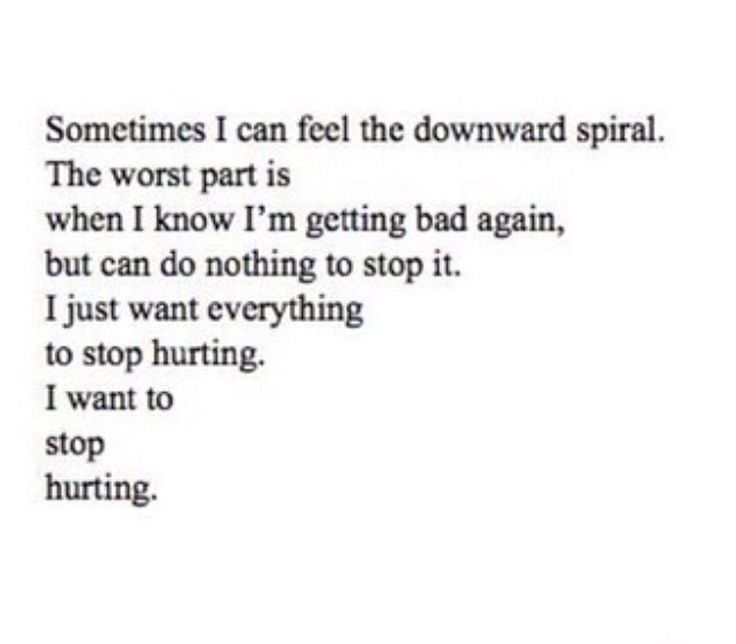 The cause of periodontitis can be untreated pulpitis, local trauma, unsuccessful dental intervention.
The cause of periodontitis can be untreated pulpitis, local trauma, unsuccessful dental intervention.
Periosteum (periosteum) Dense connective tissue surrounding the jawbone. Permeated with vessels and nerve endings, so periostitis is painful. Most often it occurs due to pulpitis, periodontitis, acute gingivitis.
Gingiva Soft tissue that holds the tooth in the socket and protects the root from external influences. Inflammatory gum disease - periodontitis, gingivitis, is also painful, but in this case there will be no sharp pain, but rather aching pain.
Features of toothache in various diseases
- Periodontitis
- Superficial caries, thinning of enamel
- Caries of the middle layers
- deep caries
- Pulpitis
- Periostitis (flux)
- Inflammatory gum disease
Superficial caries, thinning of enamel
Discomfort on contact with hot, cold, sweet, sour food A sick tooth can whine for a short time, hurt when biting. The carious cavity can be seen or felt with the tongue.
The carious cavity can be seen or felt with the tongue.
Deep caries
The infection penetrates deeper and closer to the pulp. Soreness intensifies, becomes longer, sometimes pulsating. The destruction of the tooth is clearly visible, it turns black.
Pulpitis
The main symptom of acute pulpitis is sharp, sharp, shooting pain. Pain can spread throughout the jaw, give to the ear. Often a person cannot understand what kind of tooth he suffers from. Contact with cold or hot food, attempts to chew on the affected side, become unbearable. Spontaneous attacks of toothache often occur and intensify at night, and then the question is how to fall asleep and endure until morning.
Periodontitis
Pain is rather not sharp, but aching, but strong. A tooth can “wine on one note” for several days in a row. A characteristic sign of periodontitis is a darkened and cyanotic gum. Untreated periodontitis can be complicated by a dental abscess. A person feels that the diseased tooth has risen in the hole and has become higher than the rest. A fever develops, the tooth becomes mobile, the cheek swells.
A fever develops, the tooth becomes mobile, the cheek swells.
Periostitis (flux)
This is an inflammation of the periosteum. It is characterized by redness and swelling of the mucous membranes in the affected area. The most noticeable symptom is cheek swelling. Non-infectious periostitis usually occurs with moderate symptoms. But the purulent one proceeds more severely, with severe intoxication. Redness, swelling of the gums, asymmetry of the face are strongly manifested. The temperature rises, the pain syndrome becomes more pronounced and intensifies when biting, it reacts sharply to cold and heat. The submandibular, behind the ear, and sometimes cervical lymph nodes are enlarged. Fistulas often form, through which pus enters the oral cavity. Purulent periostitis threatens with a dangerous and even deadly complication - phlegmon of the jaw.
Inflammatory gum disease
Manifested not by acute, but by aching pain. Sensitivity develops, the gum turns red, swells, bleeds.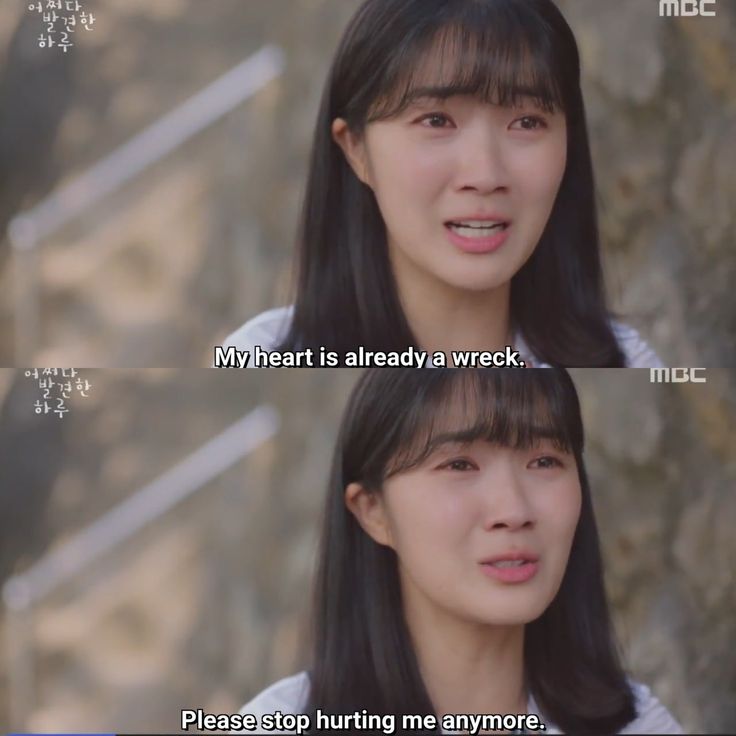
Other causes of toothache
Pain of varying intensity may occur after medical interventions - canal treatment, implant placement, removal. In addition, after whitening procedures, sensitivity may temporarily increase. If the pain does not last long and gradually fades, this is considered normal.
How long can discomfort last after dental procedures:
- After canal filling Moderate or mild aching pain. Discomfort when biting. Normally, they can be observed within 3-5 days after the procedure. Read more 👉 why a tooth can hurt after nerve removal and what to do.
- After implant placement This is a surgical operation, so the intervention site may hurt up to 10 days on average. Read more about 👉 normal pain after implantation.
- After tooth extraction May be sore for 3-5 days. If the pain does not subside, increases, or the temperature rises, consult a doctor. Find out 👉 what to do after removing unit
What can you confuse a toothache with?
- Inflammation of the trigeminal nerve It lies close to the roots of the teeth, so often when it is inflamed, a person begins to feel a pulling “pain in the teeth”, which can spread to the entire jaw.
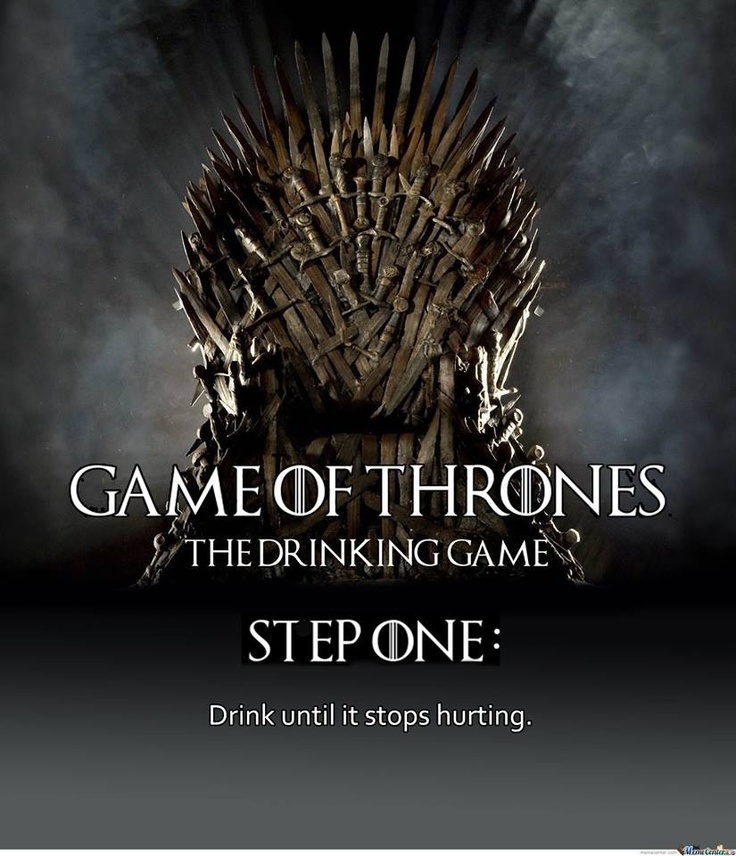
- ENT diseases (sinusitis, sinusitis, otitis media) It is especially difficult to diagnose young children who cannot tell exactly where and how it hurts.
- Stress 😲 Surprisingly, strong experiences can make your teeth hurt, especially at night.
Is it possible to endure a toothache?
As they say, nothing is impossible - it's all about the consequences for your health.
If you suddenly have increased sensitivity, there is a short-term aching pain when biting - it's time for an appointment at the dental clinic. In this case, there is a chance to get off with little blood - that is, treatment without depulpation. But if you postpone a visit to the dentist for a week or two (not for six months!), this is unlikely to lead to serious complications, although the chances of keeping the tooth "alive" every day will be less and less.
With a certain persistence 💪 or a high pain threshold, you can also endure acute pain.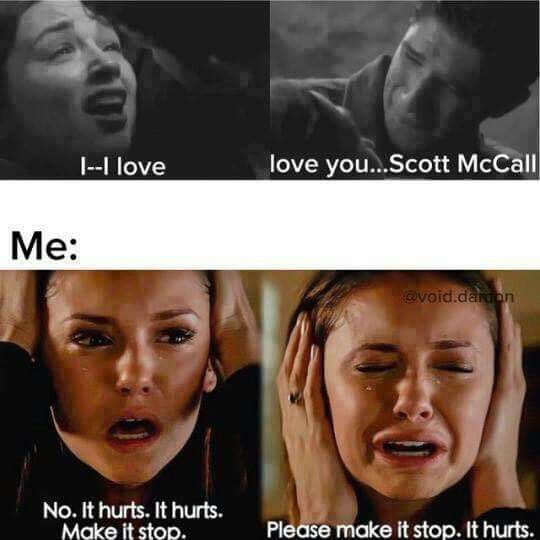 But it must be remembered that this phase of the disease is already fraught with serious complications. You will feel better for a while, but there are no reasons for joy here - this means that the nervous tissue has "died" and simply stopped sending distress signals. At the same time, the inflammatory process, most likely, will not go anywhere, but will go further. And this means that you are threatened with periodontitis, periostitis, cysts and abscesses. In this case, tooth loss is almost guaranteed.
But it must be remembered that this phase of the disease is already fraught with serious complications. You will feel better for a while, but there are no reasons for joy here - this means that the nervous tissue has "died" and simply stopped sending distress signals. At the same time, the inflammatory process, most likely, will not go anywhere, but will go further. And this means that you are threatened with periodontitis, periostitis, cysts and abscesses. In this case, tooth loss is almost guaranteed.
But the main danger is that the infection with blood and lymph will “walk” throughout the body, threatening not only with dental diseases, but also with sinusitis, osteomyelitis, inflammation of the heart muscle, joints, and even blood poisoning.
Therefore, the problem "how to remove a toothache" should not remain relevant for too long - it is better to make an appointment with a doctor as soon as possible, even if it is scary. 😖 Fear of the dental chair is a relic of the past. In modern clinics, patients are treated carefully and without pain.
In modern clinics, patients are treated carefully and without pain.
When to see a dentist urgently
The following symptoms indicate that you have developed purulent complications, and the tooth needs to be urgently opened:
- Nothing helps, even strong painkillers "in horse doses".
- The temperature has risen, especially 38℃ or higher.
- The cheek swells, an abscess has appeared on the gum, the gum is bursting, there is an unpleasant smell from the mouth.
Urgently go to the doctor's office - you must be seen without waiting in line as a patient with acute pain. If this happened at night, go to the dentist on duty, her contacts can be found on the Internet.
What to do - how to relieve a toothache quickly
Pain is a symptom of an inflammatory process. This means that in order for it to go away, it is necessary to reduce the swelling caused by exposure to pathogenic bacteria. Non-steroidal anti-inflammatory drugs (NSAIDs) quickly and effectively fight pain and inflammation. They may differ slightly in purpose and strength of impact, but in general they will work as we need:
They may differ slightly in purpose and strength of impact, but in general they will work as we need:
- anesthetize,
- remove swelling,
- relieve inflammation,
- "bring down" the elevated temperature.
And that means an unequivocal answer to the question "what helps with toothache the fastest?" will be NSAIDs.
❗ The side effects of these drugs are also similar - all, to one degree or another, negatively affect the mucous membranes of the stomach and intestines, so they should be used with extreme caution in patients with gastrointestinal diseases. Nothing will happen from one or two times, but you should not drink these drugs for a long time.
In addition, NSAIDs thin the blood and can adversely affect the functioning of the liver and kidneys. A significant part of them is not recommended for pregnant, lactating women, children - we recommend a detailed article 👉 a toothache during pregnancy, which is possible / impossible. Part is allowed with caution and proper dosage.
Part is allowed with caution and proper dosage.
No NSAIDs with alcohol ☝️
It is highly undesirable to take NSAIDs with alcohol, as the load on the liver increases many times over. If you combine the intake of nonsteroidal drugs, the effect is enhanced, but the risk of side effects will also increase sharply.
You can buy NSAIDs without a prescription at any pharmacy. But, if not only the question of how to relieve a toothache is important to you, but also how to do it safely, be sure to read the instructions before using analgesics. Better yet, consult a doctor.
Top 6 medicines for toothache
The most effective NSAIDs (the active substance is indicated in brackets):
- Analgin (metamizole sodium), tempalgin (metamizole sodium + tempidone) "A time-tested classic." Strong analgesic, anti-inflammatory agent. Use with caution in children. Pregnant and lactating is contraindicated. Tempidone enhances the analgesic properties of metamizole and increases the duration of its action.
 Favorably affects the emotional component of pain, reducing anxiety, fear and tension. Do not use in children under the age of 15, pregnant and lactating.
Favorably affects the emotional component of pain, reducing anxiety, fear and tension. Do not use in children under the age of 15, pregnant and lactating. - Nise, Nimesil (nimesulide) Relieves pain, inflammation, fever. Special forms of medicine are allowed for children. Use with caution in elderly patients. Pregnant and lactating is contraindicated.
- Ibuprom, Nurofen, Nurofen Plus (ibuprofen) Drugs with a pronounced analgesic, anti-inflammatory and antipyretic effect. Nurofen Plus and Nurofen Plus N contain codeine, which dilates blood vessels, relieves spasm and enhances the analgesic effect. Allowed for children, the elderly, pregnant women (except for the last trimester).
- Ketonal, OKI, Flamax (ketoprofen) Effective for moderate and severe pain of various origins, including toothache. Appointed after surgery. Contraindicated in children under 15 years of age. Pregnant women are prescribed in the first and second trimester if the expected benefit outweighs the expected harm.

- Ketorol, Ketanov (Ketorolac) Fast acting strong pain reliever. Not indicated for pregnancy, lactation, children under 16 years old
- Paracetamol is not an NSAID. Recommended for pain syndrome of weak and moderate intensity, strong antipyretic.
Which drugs for toothache can pregnant women and children
For pregnant women, toothache is a real problem. Of course, it is better to cope without pills, folk remedies. But, if it doesn't help, drink paracetamol. It can be prescribed at any time and at usual dosages. In the 1st and 2nd trimesters, ibuprofen and ketoprofen are also allowed. Paracetamol, ibuprofen, nimesulide, in special doses, are approved for children. Ibuprofen and paracetamol from 6 months, nimesulide - from 2 years.
How to relieve toothache at home without pills
- Apply a cold compress to the cheek, a piece of ice ❄️ wrapped in a cloth. Cold constricts blood vessels, relieves swelling and inhibits the spread of infection.
 At the same time, care must be taken to prevent frostbite - do not apply ice directly to the skin, especially for a long time.
At the same time, care must be taken to prevent frostbite - do not apply ice directly to the skin, especially for a long time. - Thoroughly but gently brush teeth using dental floss and brushes, then rinse. This method is suitable for a feeling of fullness and discomfort caused by pieces of food stuck in the interdental spaces.
- Put a cotton swab moistened with an alcohol solution into the carious hole. For example, diluted alcohol, vodka, alcohol tincture of calendula flowers, propolis. This procedure helps fight infection and inflammation.
- Rinse your mouth 👅 with a diluted 3% solution of hydrogen peroxide, miramistin, furacilin, or chlorhexidine. Disinfects, softens plaque, relieves inflammation. Also effective in the treatment of inflammatory diseases of the gums (gingivitis, periodontitis, stomatitis). Using a high concentration solution threatens to burn the mucous membranes, so before rinsing, carefully read the instructions on how to properly dilute these drugs.
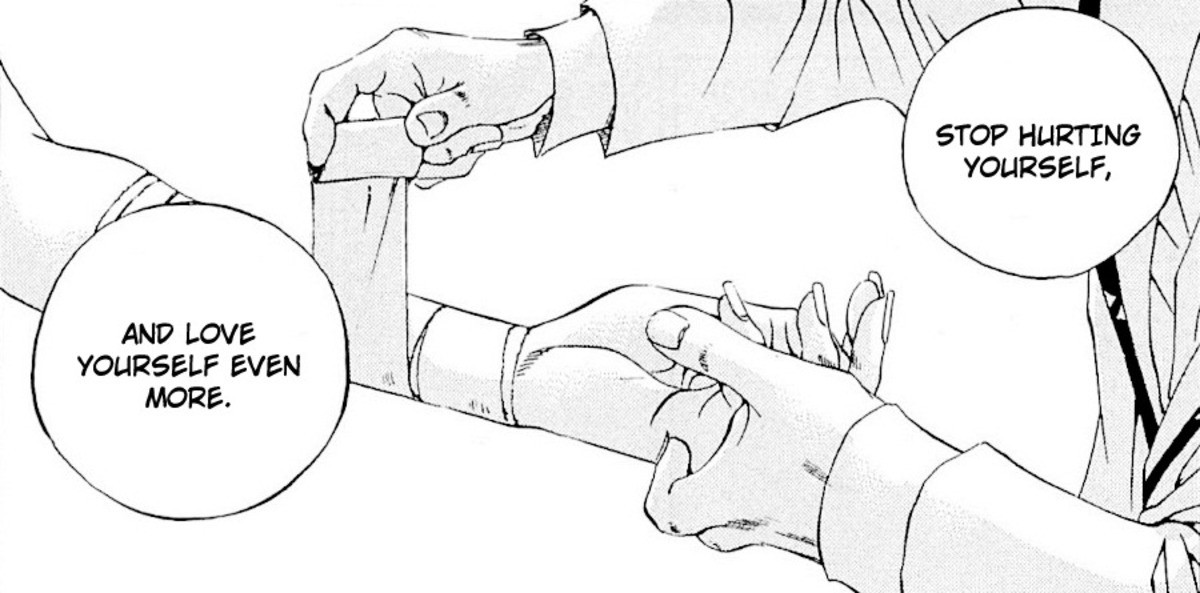 Hydrogen peroxide must be diluted with water in a ratio of 1:11.
Hydrogen peroxide must be diluted with water in a ratio of 1:11. - Rinse your mouth with soda or saline solutions (1 teaspoon per glass of water, you can add 2 drops of iodine). Disinfects, relieves swelling by reducing the osmotic pressure in the tissues. In addition to carious pain, it is recommended for discomfort after eating, root canal treatment.
- Rinse the mouth with decoctions of herbs with anti-inflammatory properties (chamomile, St. John's wort, sage, calendula flowers, oak bark). Steam 2 tablespoons of herbs with a glass of boiling water, leave for 20 minutes. Before rinsing, cool to a warm or "room" state.
- Do acupressure. The acupuncture points that are "responsible for the teeth" are located between the thumbs and forefingers, under the earlobes, on the side of the index finger 2–3 mm below the nail. They need to be pressed rhythmically, tangibly, but without fanaticism.
- Try to be distracted 👨💻 Do something that requires maximum concentration or something exciting.

Do's and Don'ts
Can
- Take painkillers
- Apply alcohol compress
- Rinse with antiseptic solutions
- Clean interdental spaces
- Massage specific points
- Try to distract yourself or sleep
Do not
- Take antibiotics without a doctor's prescription. Even if it once helped a neighbor or great aunt.
- Lie horizontally without a pillow. Blood will rush more strongly to the diseased area, and soreness will intensify.
- Indulge in painkillers: take them in handfuls and for a long time. Especially if you have problems with your stomach and intestines.
- Apply heat to the affected area. This can provoke or intensify purulent processes.
- Drink hot drinks. All drinks and food should be warm or at room temperature.
Prevention of toothache
To prevent this trouble from happening to you (and this happens, as luck would have it, the most inopportune moment), always visit a doctor before traveling to any place where it is difficult or insanely expensive to get medical care.